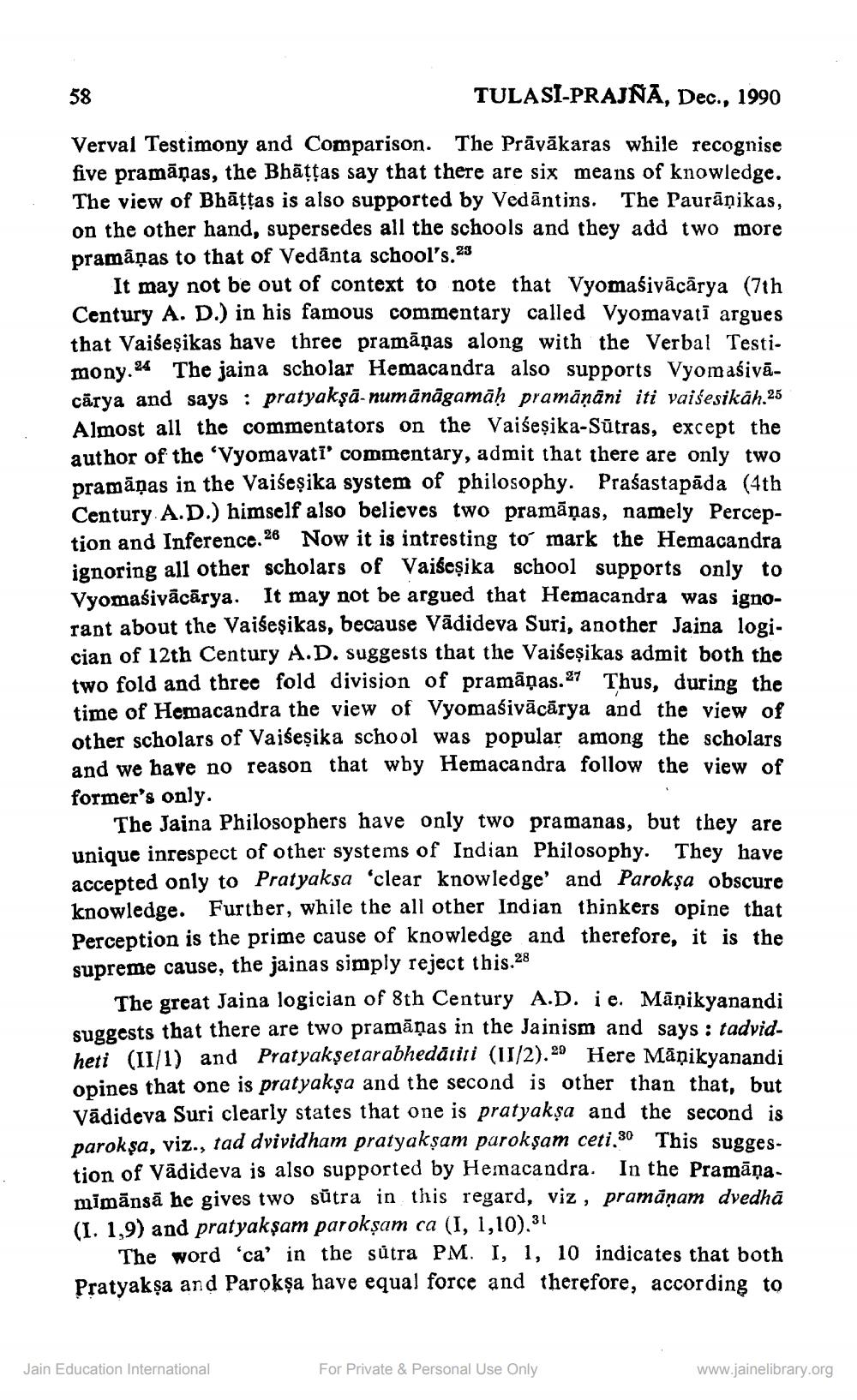________________
58
TULASI-PRAJNA, Dec., 1990
Verval Testimony and Comparison. The Prāvākaras while recognise five pramāņas, the Bhāțțas say that there are six means of knowledge. The view of Bhāļļas is also supported by Vedāntins. The Paurāņikas, on the other hand, supersedes all the schools and they add two more pramāņas to that of Vedänta school's. 23
It may not be out of context to note that Vyomaśivācārya (71h Century A. D.) in his famous commentary called Vyomavatī argues that Vaišeşikas have three pramāṇas along with the Verbal Testimony.24 The jaina scholar Hemacandra also supports Vyomaśivācārya and says : pratyakşa-numānāgamāḥ pramāṇāni iti vaisesikäh.25 Almost all the commentators on the Vaišeşika-Sūtras, except the author of the 'Vyomavati' commentary, admit that there are only two pramäņas in the Vaiseșika system of philosophy. Prasastapāda (4th Century A.D.) himself also believes two pramāṇas, namely Perception and Inference. 26 Now it is intresting to mark the Hemacandra ignoring all other scholars of Vaišeșika school supports only to Vyomaśivācārya. It may not be argued that Hemacandra was ignorant about the Vaišeşikas, because Vādideva Suri, another Jaina logician of 12th Century A.D. suggests that the Vaišeşikas admit both the two fold and three fold division of pramāņas. 27 Thus, during the time of Hemacandra the view of Vyomaśivācārya and the view of other scholars of Vaišeşika school was popular among the scholars and we have no reason that wby Hemacandra follow the view of former's only.
The Jaina Philosophers have only two pramanas, but they are unique inrespect of other systems of Indian Philosophy. They have accepted only to Pratyaksa 'clear knowledge' and Parokşa obscure knowledge. Furtber, while the all other Indian thinkers opine that Perception is the prime cause of knowledge and therefore, it is the supreme cause, the jainas simply reject this.28
The great Jaina logician of 8th Century A.D. ie. Māņikyanandi suggests that there are two pramāṇas in the Jainism and says : tadvidheti (11/1) and Pratyakşetarabhedāliti (11/2).29 Here Māņikyanandi opines that one is pratyakșa and the second is other than that, but Vādideva Suri clearly states that one is pratyakșa and the second is parokșa, viz., tad dvividham pratyakşam parokşam ceti, 30 This suggestion of Vadideva is also supported by Hemacandra. In the Pramāņamīmānsā he gives two sutra in this regard, viz , pramāṇam dvedhā (I. 1,9) and pratyakşam parokşam ca (I, 1,10).31
The word 'ca' in the sutra PM. I, 1, 10 indicates that both Pratyakşa and Parokşa have equal force and therefore, according to
Jain Education International
For Private & Personal Use Only
www.jainelibrary.org




